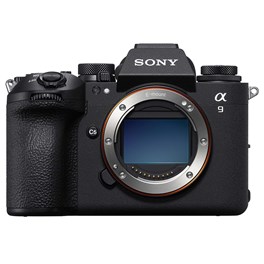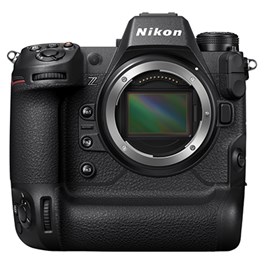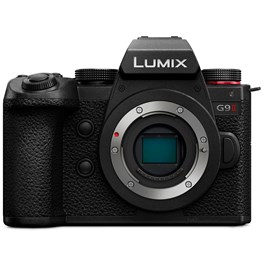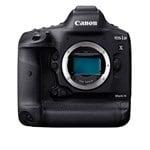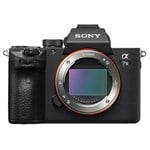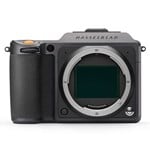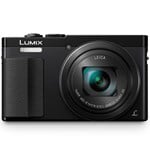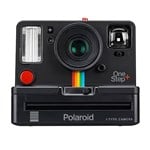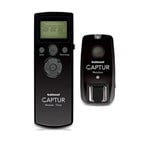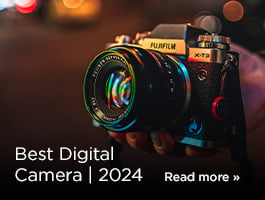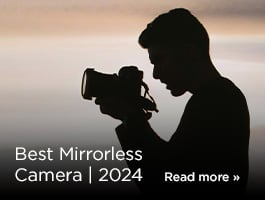
What is the best camera for wildlife photography? That’s a good question. The best camera for wildlife photographers needs to be fast, precise and built to handle the ever changing weather. It needs to help you track birds in flight, freeze a big cat running at top speed, or retain clarity when the light begins to fade.
In this guide, we’ve selected the very best wildlife cameras available right now, focusing on precision autofocus, fast burst rates, and rugged build quality. These are the top-tier options on the market: flagship mirrorless models with high-speed performance and AI-powered subject tracking. While some wildlife guides prioritise affordability, this one is all about the absolute best tools for the job – no compromises.
Scroll to the bottom of this page for more on our selection criteria, and if you're looking for a broader range of recommendations, check out our full guide to the best mirrorless cameras. And if you’ve already chosen and put your camera in the basket, you’ll need a lens. Check out our guide to the best lenses for wildlife photography.
|
Sensor: 24.6MP full-frame global shutter CMOS Autofocus: AI-powered Real-time AF with 759 points Speed: 120fps blackout-free burst shooting Video: 4K 120p and 6K oversampled recording Stabilisation: 5-axis IBIS with up to 8 stops |
Pros:
Cons:
|
The Sony A9 III is built for speed and is worthy of being the first option we talk about when considering the best camera for wildlife photography. Its global shutter technology eliminates rolling shutter distortion, meaning you can freeze even the fastest-moving subjects with perfect clarity.
Then, there’s the autofocus system. It is exceptional. And it’s safe to say that this AF system is probably the best around (at the time of writing). Its real-time subject tracking locks onto animals and birds effortlessly, and combine that with 120fps burst shooting - which is one of the fastest on the market - and you’ll easily capture each and every crucial moment when photographing animals.
You might be wondering about its sensor. Its 24.6MP sensor might seem low compared to some high-resolution competitors, but that lower count is in exchange for its speed and reliability rather than extreme detail. But rest assured, 24.6MP isn’t exactly low — it’ll capture excellent detail and perform well in low light.
|
Sensor: 45.7MP full-frame stacked CMOS Autofocus: 493-point phase-detection AF with deep learning Speed: 120fps burst with 11MP images Video: 8K 60p and 4K 120p internal recording Build: Pro-level weather sealing |
Pros:
Cons:
|
The Nikon Z9 is an excellent choice of camera for wildlife photography. It’s that stacked 45.7MP sensor that offers incredible speed and detail - it can shoot up to 120fps - impressive. It’s reliable, with autofocus that just locks onto subjects and doesn’t let go. The lack of a mechanical shutter is actually a plus – it eliminates blackout and makes tracking moving subjects seamless.
While we’re focusing on photography in this guide, the Z9 also has amazing video specs. It can shoot 8K 60p with huge recording time. Pair that with some fantastic AF performance, the Z9 is a very capable camera for animal videography.
It’s built like a tank, which is great for durability but does mean it’s big and heavy. If you’re hiking for hours with a telephoto lens, you’ll really feel it. And, of course, it’s pricey – but if wildlife photography is your thing, it’s hard to beat. This camera is designed for wildlife photography, and the results really do speak for themselves.
If the size puts you off, there’s always the Nikon Z8, which is essentially a smaller version of the Z9. You still get fantastic image quality, crazy-fast autofocus, and pro-level build quality, but in a smaller package that’s a bit easier to carry around.
|
Sensor: 45MP full-frame CMOS Autofocus: Dual Pixel CMOS AF II with AI tracking Speed: 30fps burst shooting Video: 8K internal recording with improved heat management Stabilisation: In-body IS with up to 8 stops |
Pros:
Cons:
|
The Canon EOS R5 Mark II builds on the success of the original R5, refining its autofocus, burst speed, and video capabilities to make it an even better choice for wildlife photographers. The 45MP sensor provides exceptional detail, allowing for heavy cropping without sacrificing image quality, which is ideal if you’re observing distant wildlife when you can’t get physically closer.
Of course, there’s Canon’s Dual Pixel CMOS AF II system, but this time, it’s been improved even further with better subject recognition and tracking, making it even more reliable for fast-moving animals. The 30fps burst mode using the electronic shutter is another improvement over the R5, giving you ample chance to nail the perfect shot.
The battery life of the original R5 was something we would have liked to have been a bit better, and while the Mark II has seen some improvements for longer shoots, you’re best to carry some spares. Like other cameras mentioned in this guide, hybrid shooting is standard now, and the R5 Mark II offers 8K video, which is stunning, but it produces huge file sizes. You’ll need lots of storage if that’s your jam. But overall, if you want high resolution, speed, and some of the best autofocus in the game, the R5 Mark II will not disappoint.
|
Sensor: 50.1 MP Exmor RS stacked CMOS Autofocus: AI-driven subject detection AF Speed: 30fps blackout-free burst Video: 8K 30p and 4K 50/60p 10-bit 4:2:2 Stabilisation: 8.5-stop central and 7.0-stop peripheral image stabilisation |
Pros:
Cons:
|
The Sony A1 II takes everything that made the original A1 great and pushes it even further, making it one of the best cameras for wildlife photography. The new 60MP sensor delivers incredible detail, allowing for hefty cropping without losing clarity, which is great if you can’t get close to your animal subjects.
Speed hasn’t taken a back seat either. The 120fps burst mode (when using the electronic shutter) is super fast, matching the A9 III’s speed while maintaining a much higher resolution. This means you get both extreme detail and rapid-fire shooting, a combination that’s hard to beat. The autofocus system has also been refined, with even better Real-Time Eye AF for animals and birds.
How does the A1 II compare to the A9 III? The A9 III is still the king of speed, with its global shutter eliminating any rolling shutter distortion. But it has a lower 24.6MP resolution, meaning you won’t get the same level of fine detail or cropping flexibility as the A1 II’s 60MP sensor. You also could save yourself some money (not loads, but still some) and go for the original A1, which remains a fantastic all-rounder camera.
|
Sensor: 25.2MP Micro Four Thirds Live MOS Stabilisation: 8-stop Dual I.S. 2 Autofocus: Phase-detect hybrid AF Video: 5.7K 60p and 4:2:2 10-bit Speed: 60 fps electronic burst |
Pros:
Cons:
|
The Lumix G9 II is the first of two Micro Four Thirds cameras for wildlife photography. It’s an excellent choice for its speed, portability, and arsenal of compatible lenses. Its 2x crop factor means a 300mm lens gives you the equivalent of 600mm reach, making it easier to fill the frame with distant subjects.
Speed-wise, it can fire off bursts at 60 fps with its electronic shutter, making it one of the fastest cameras in this lineup. Combined with Panasonic’s improved phase-detection autofocus, the G9 II easily locks onto birds and animals, though it’s not quite as advanced as Sony or Canon’s AF tracking systems. One of the biggest pros of this camera is its image stabilisation, offering up to 8 stops of compensation, which is a huge plus when it comes to shooting handheld.
Where it differs from other options on this list is its smaller sensor with just 25 megapixels. This results in a less effective low-light performance, and its AF isn’t quite as impressive. That said, this camera is far more budget-friendly. While some features aren’t on the same level, it remains highly effective and highly recommended.
|
Sensor: 26.1MP APS-C stacked X-Trans CMOS 5 HS Autofocus: AI-assisted subject detection Speed: 40fps blackout-free burst Video: 6.2K 30p and 4K 120p Stabilisation: 7-stop in-body IS |
Pros:
Cons:
|
The X-H2S is Fujifilm’s answer to the need for speed. Its 40MP stacked APS-C sensor offers a fast 40 fps with its electronic shutter. This is admittedly slower than other options in this guide, however, its full-res RAW burst rate beats the likes of the Z9, so it’s a balancing act of what you need in a camera. That stacked sensor design also enables an exceptional 14 stops of dynamic range, fast readout speeds and blackout-free continuous shooting, so your viewfinder experience isn't dulled.
Its subject-detection autofocus has been significantly upgraded, offering reliable tracking for a variety of subjects, especially animals. The X-H2S also features up to 7-stops of image stabilisation and is one of the best out there, making it great for handheld shots.
If you’re a Fujifilm fan, you may miss all the manual controls we’ve come to expect from the X-T series, as this one has a more modern control layout. And while autofocus is good, other options on this list have a slight edge. But for anyone who loves Fujifilm’s colour science and wants a super-fast APS-C camera and a range of stunning Fuji lenses, this is a great choice.
|
Sensor: 20.4MP stacked Micro Four Thirds Live MOS Autofocus: AI-driven 1053-point phase-detect AF Speed: 120fps electronic burst Video: C4K at 60p, Full HD at 240p Stabilisation: 8.5-stop IBIS |
Pros:
Cons:
|
The OM System OM-1 Mark II is a very capable option for wildlife photography. It’s built for speed, portability, and durability - it’s supposed to be out in the wild. It’s compact, lightweight and features some of the best weather sealing in any camera (rated to IP53); it can handle heavy rain, dust, and freezing temperatures. It also offers up to 8.5 stops of compensation, which is a huge advantage when shooting with long lenses. And, with its 2x crop factor - turning a 200mm into a 400mm equivalent - you’ll need that stabilisation if you’re shooting handheld.
When it comes to performance, the OM-1 Mark II doesn’t stop there. It features a stacked 20MP Micro Four Thirds sensor that delivers excellent readout speeds, allowing for blackout-free 120 fps burst shooting. Combine this with a precision AI-powered autofocus, you can track birds, mammals with ease.

How to choose the best camera for wildlife photography
What do you need to think about when picking a camera for wildlife photography? Here is a quick précis of what we think are the key specs:
Sensor size - In many genres of photography, you basically want to get the largest sensor you can afford. However, in wildlife it’s a little less cut and dried. Sure, a big full-frame sensor will give you all the usual advantages – better dynamic range, overall better image quality, better low light performance. However, the crop factor of a smaller sensor gives you extra telephoto reach, which can be hugely helpful with shyer subjects. See our Photography Jargon Buster if any of these terms are unfamiliar.
Autofocus speed - In wildlife, your subjects aren’t going to hang around. So something that’s very important, even more important than burst rate, is having an autofocus system that can lock onto a subject quickly and reliably. Having good AF tracking is really helpful too, as it means you can keep focus on an animal even as it starts to move.
Build quality - Wildlife photography is an outdoor pursuit. This means a camera with solid weatherproofing is going to be invaluable in ensuring you can stay outside when the weather turns unpleasant – as it is known to do in the UK! Also, as you’ll be out all day, it’s useful to have a camera with long battery life and multiple memory card slots.
For more help choosing, see wildlife pro Tom Mason’s wildlife photography kit bag. And once you’ve got your camera, check out our guide to the best wildlife photography lenses.
FAQs
What type of camera is best for wildlife photography?
While you could use more or less any camera, a DSLR or mirrorless camera with a high-resolution sensor and fast autofocus is the best option for wildlife photography.
What lens should I use for wildlife photography?
A telephoto lens with a long focal length is best for capturing close-up shots of wildlife. You can also use a teleconverter to increase the focal length. Equally, there are scenes where a wider focal range can help capture an entire scene e.g. a starling murmuration.
Should I use a tripod for wildlife photography?
A tripod can help steady the camera and reduce blur in your photos, but it can also be cumbersome and limit your mobility. A monopod or beanbag can be a good alternative.
What is the best shutter speed for wildlife photography?
A fast shutter speed (1/1000 or faster) is ideal for freezing the motion of wildlife. A slower shutter speed can be used for creative effects, such as motion blur.
Do I need to use a high ISO for wildlife photography?
Using high ISO allows you to shoot in lower light conditions, but it can also introduce noise into your photos. It's best to use the lowest ISO possible while still maintaining a fast enough shutter speed to freeze any motion.
How do we decide?
Our in-house photography experts, store staff and partners all work collaboratively to pour over our guides and tips articles. We also consider emerging trends and customer feedback to make sure our guides are always up-to-date and reflective of what people are truly looking for. By curating only the best products, our guides provide trustworthy recommendations, making it easier for customers to make informed choices with confidence.
If you would like more advice on any purchase our contact centre staff are here to help. Alternatively, you can reach us via email or social media. And don't forget. If you were to purchase anything based on our recommendations you'll be covered by our full returns policy

Sign up for our newsletter today!
- Subscribe for exclusive discounts and special offers
- Receive our monthly content roundups
- Get the latest news and know-how from our experts

